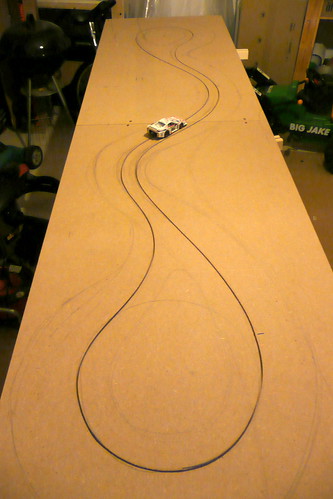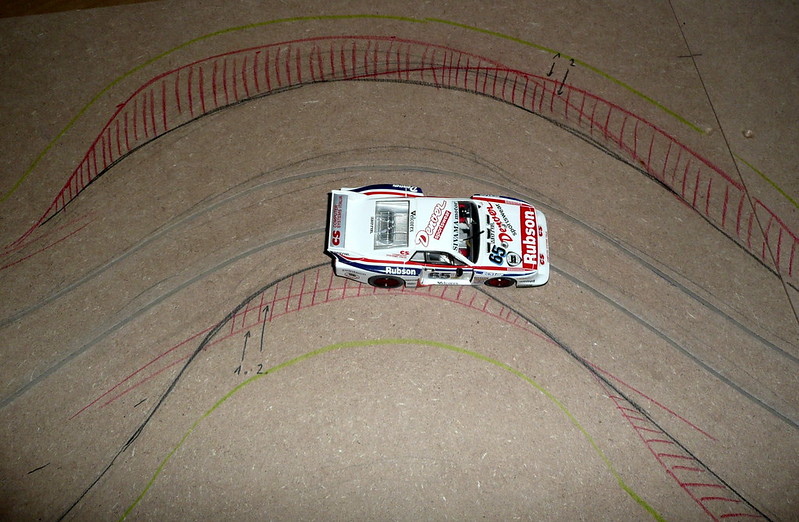Hi freaks,
browsing this and other forums I found lots of people wanting their own routed track, often asking themselves about costs, personal ability and how to do - in the end often leaving it undone.
This project is thought to show how easy it can be to build a cheap, uncomplicated little scenic track for tons of fun; from the beginning to the end. It is based on a little track (you know I like these) for my own use, a lets call it a "Cruise-o-rama" for recreational slow-motion-slotcarcruising
![Image]()
. Showing the techniques I typically use, pointing out hints and fingertips should help to show how and avoid mistakes I made for others. Special parts of the experiment are to keep the costs low (less than 50.-Euro
![Image]()
) and to keep it lightwight to make it easy to stow away.
But, main thing is: Everybody here should feel free and is asked to add own ideas, techniques, hints and everything that could help a newbie to get his/her own track finished. Thus hopefully leading to a really useful guide and should give a great overview of the "state of the art". On the other hand everybody should feel free to ask if something remains unclear!
So, welcome to the experiment, lets have fun. Regards Jens
More to follow.
browsing this and other forums I found lots of people wanting their own routed track, often asking themselves about costs, personal ability and how to do - in the end often leaving it undone.
This project is thought to show how easy it can be to build a cheap, uncomplicated little scenic track for tons of fun; from the beginning to the end. It is based on a little track (you know I like these) for my own use, a lets call it a "Cruise-o-rama" for recreational slow-motion-slotcarcruising


But, main thing is: Everybody here should feel free and is asked to add own ideas, techniques, hints and everything that could help a newbie to get his/her own track finished. Thus hopefully leading to a really useful guide and should give a great overview of the "state of the art". On the other hand everybody should feel free to ask if something remains unclear!
So, welcome to the experiment, lets have fun. Regards Jens
More to follow.







































